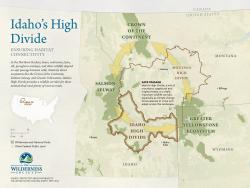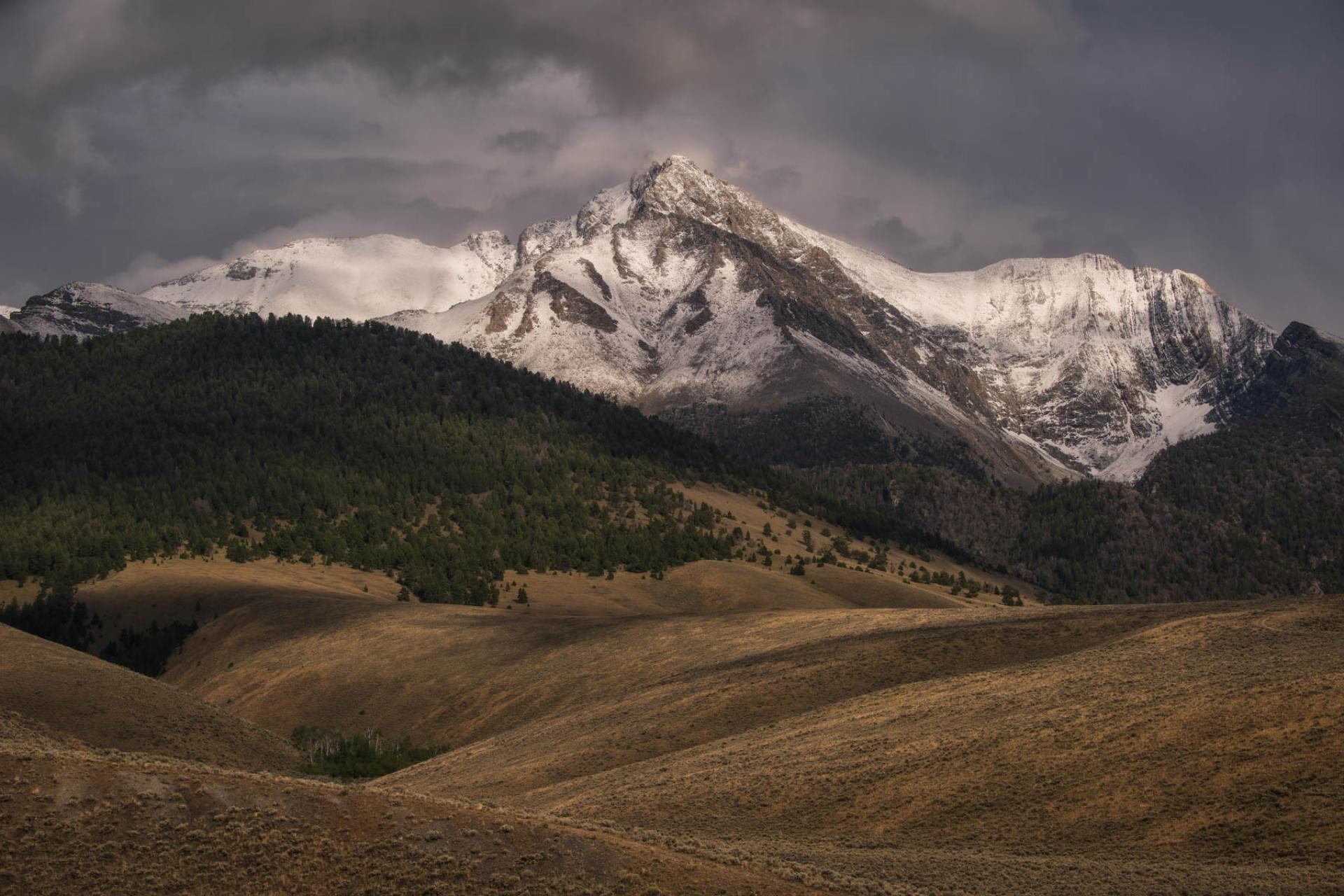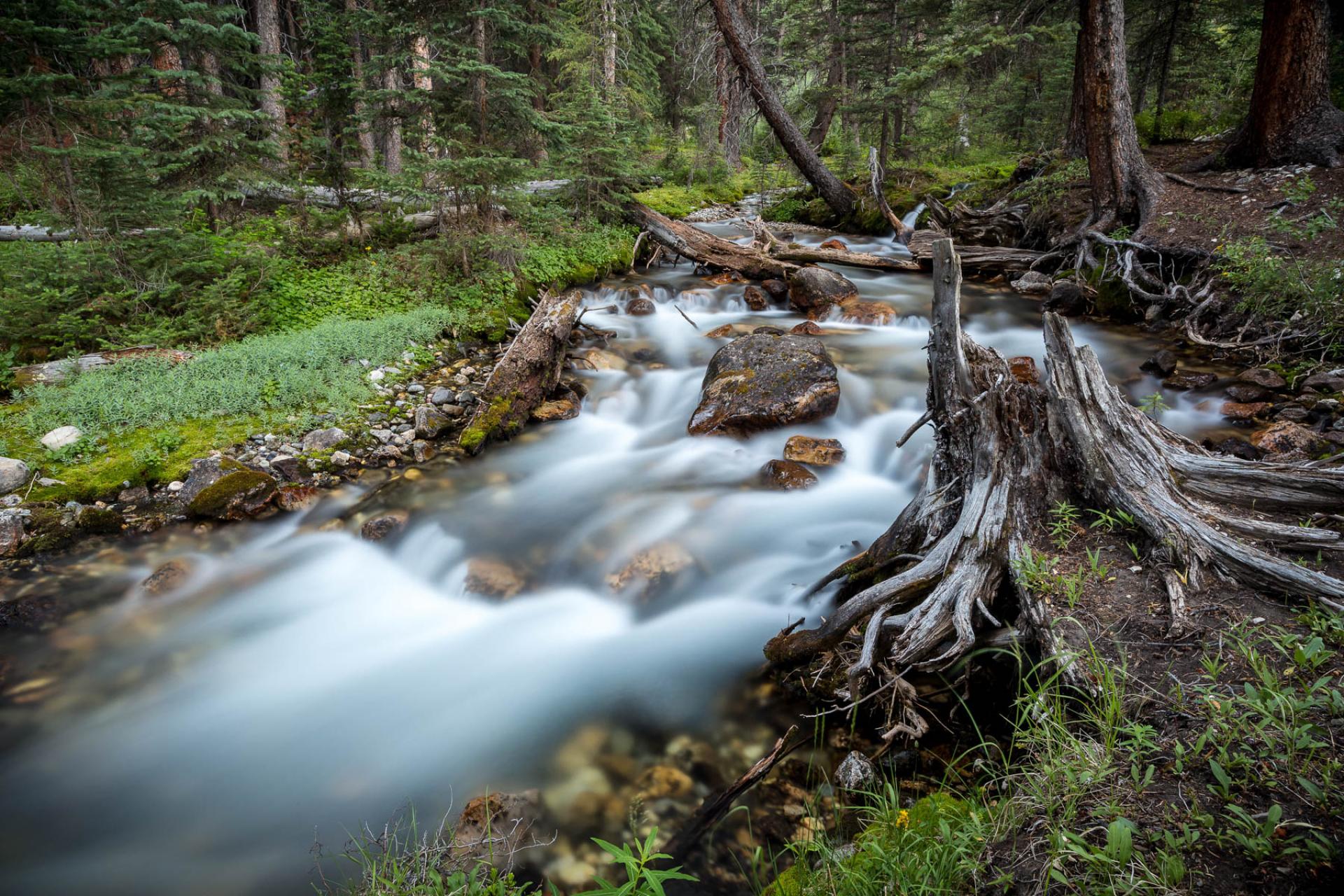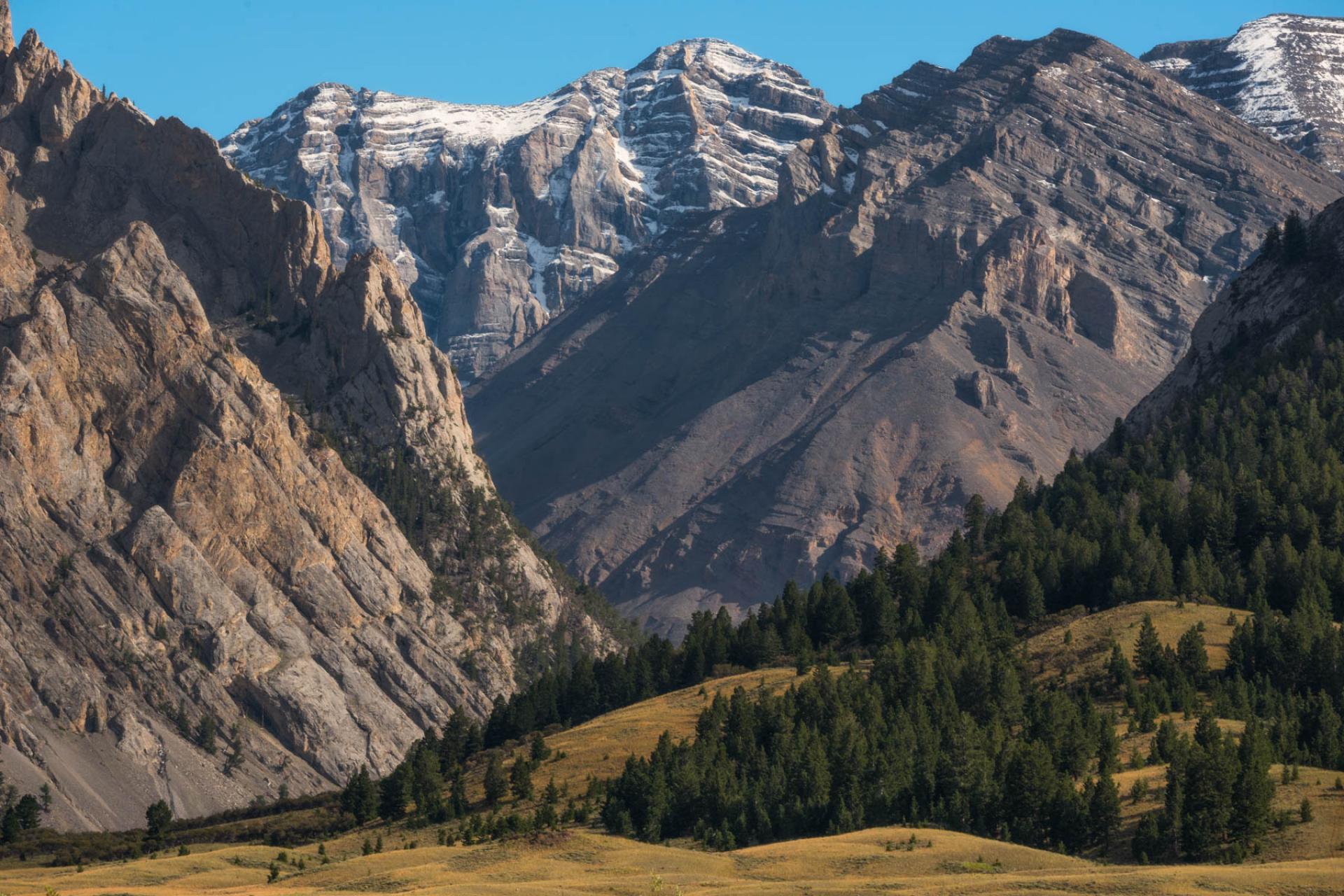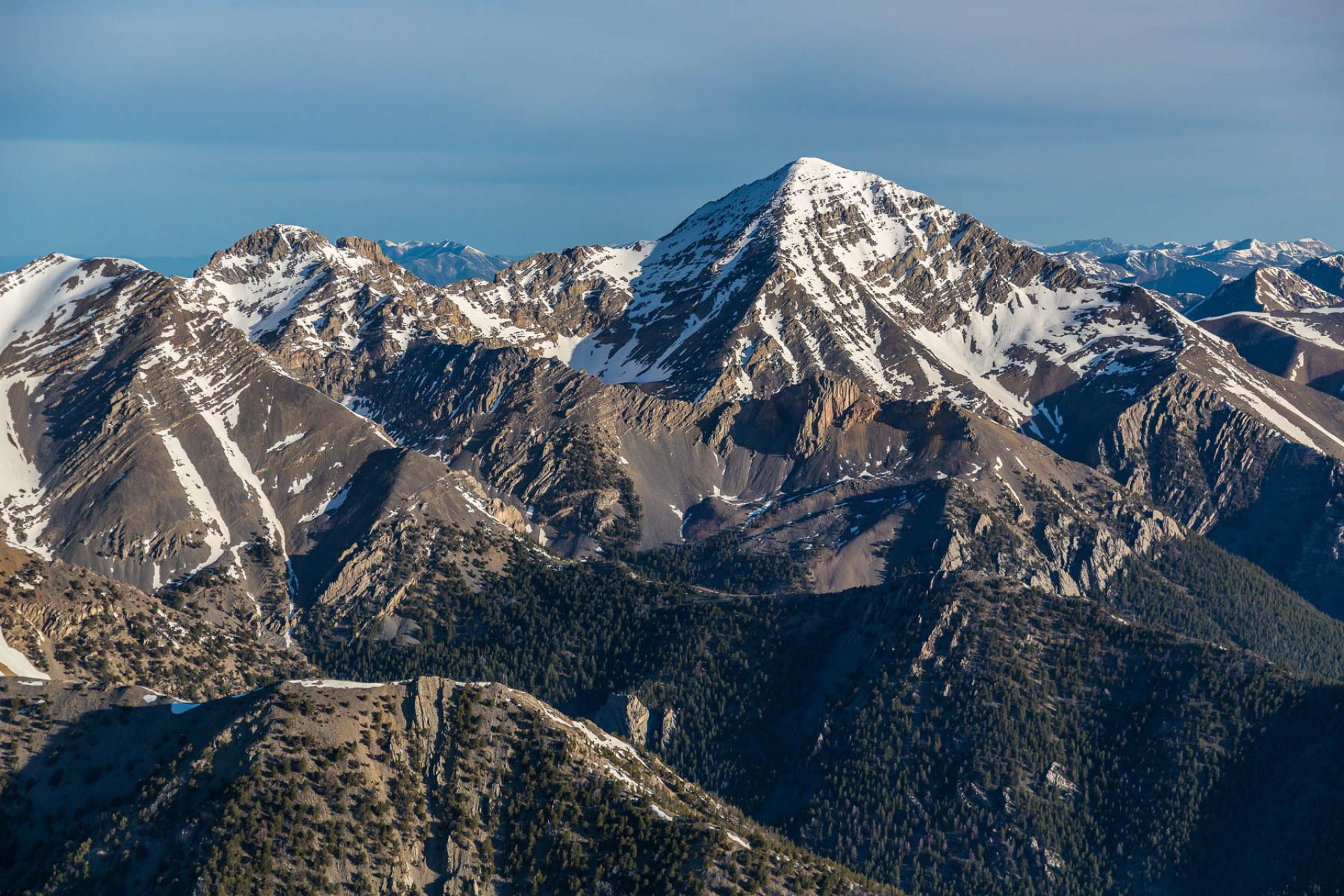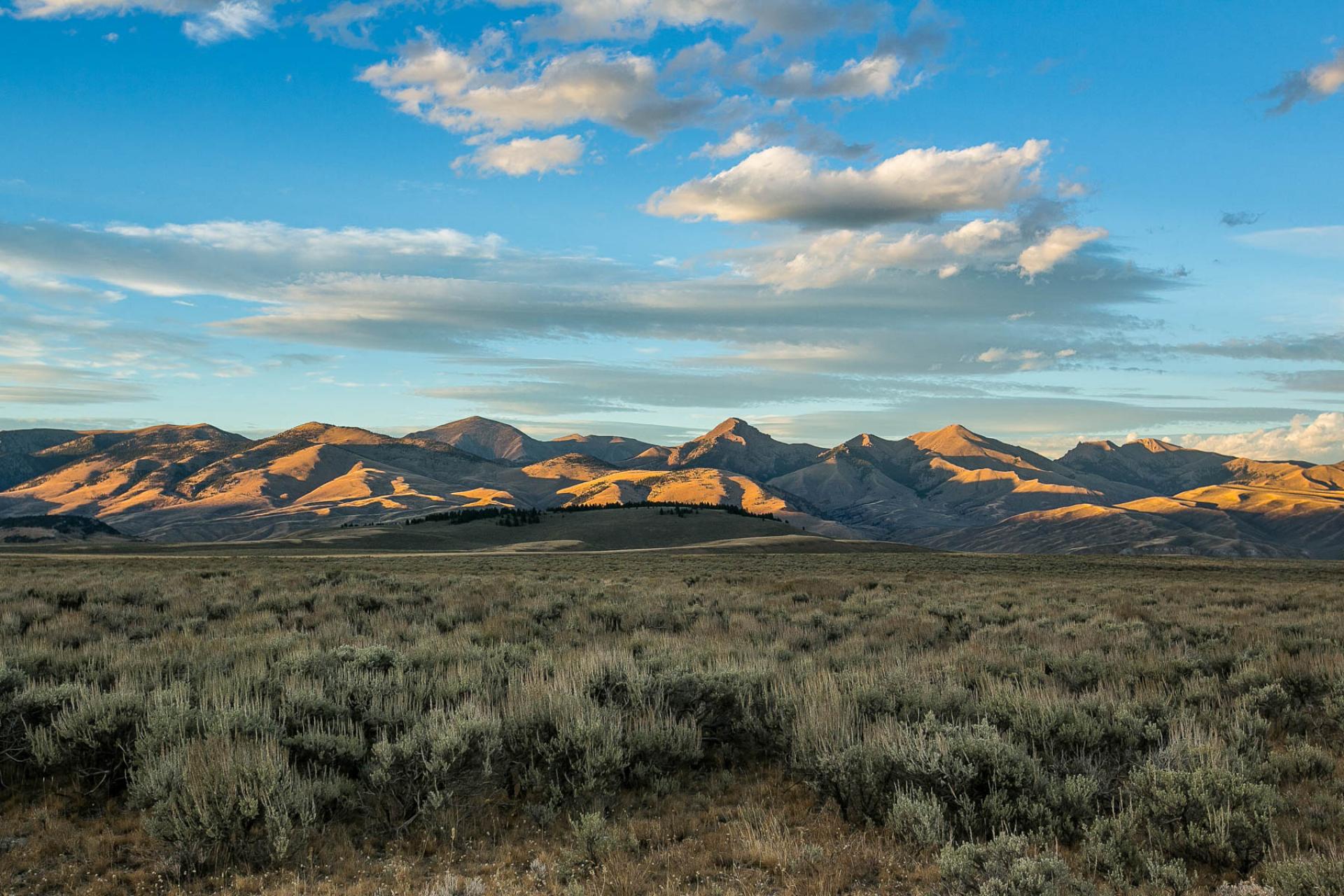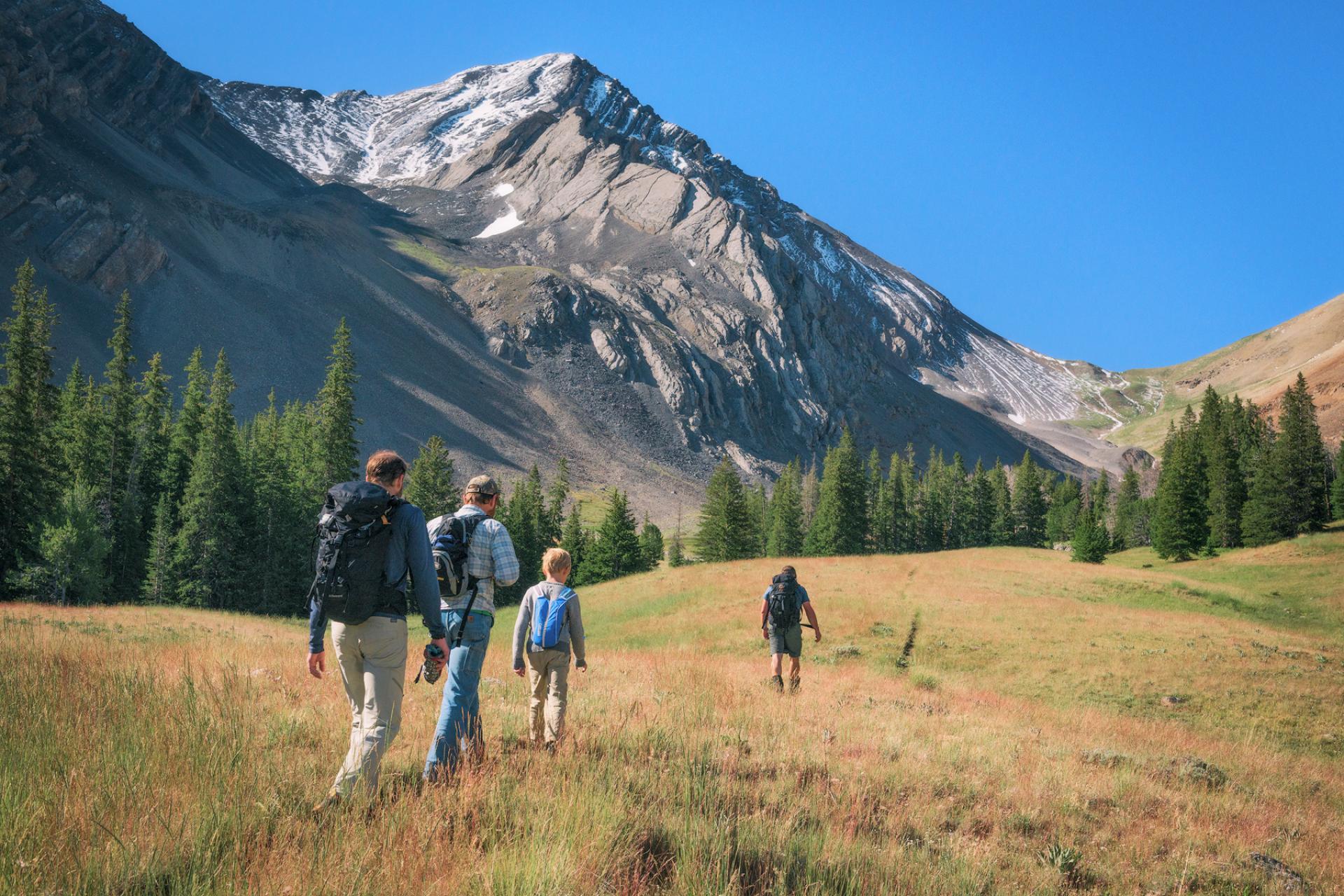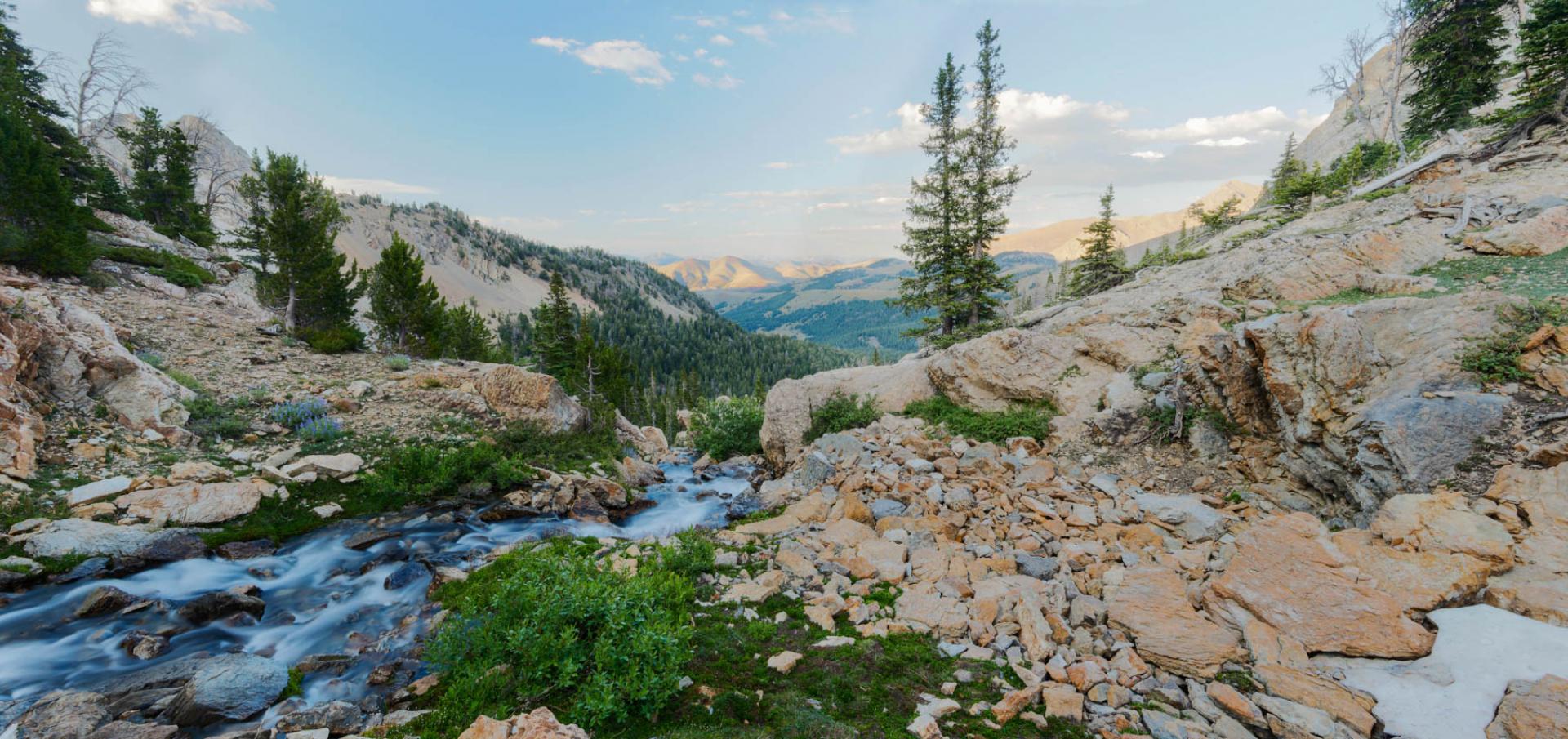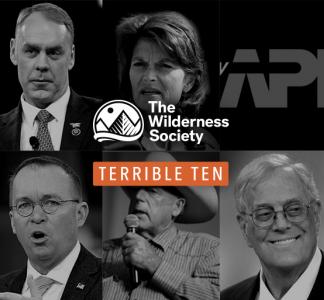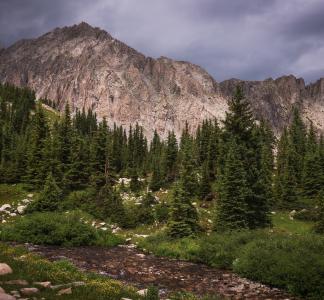Mason Cummings, TWS
Connecting and mapping wildlife habitat before it’s lost forever
Idaho’s High Divide region sits between two important ecological region—the Greater Yellowstone ecosystem to the east and the expansive Central Idaho Wilderness complex to the north. Here, millions of acres of impressive wild mountains, mighty forests and rolling plains of sagebrush provide rare, intact corridors for wildlife traveling between the three areas. Combined, these three areas provide large swaths of wildlands that are critical to species like mule deer that need room to roam, hunt and forage.
The High Divide also connects the Greater Yellowstone Ecosystem to wildlands like Frank Church-River of No Return Wilderness, Boulder-White Clouds Wilderness and Selway-Bitteroot Wilderness, providing safe passage for many to creatures.
As climate change shifts temperature and precipitation, the High Divide will be ever more important to these creatures that need room to move and adapt.
Unfortunately, much of the High Divide does not have the protections necessary to ensure its role for wildlife in the future.
Animals, both on land and in water, use this impressive expanse of American West to travel between wilderness areas. But these lands remain unprotected and potentially open to development and motorized vehicles.
The threat
Climate change often forces animals to seek new homes in the American West. Safeguarding the Idaho High Divide provides swaths of land that link different wildlife populations, strengthening “habitat connectivity.” This connectivity allows for a more diverse mix of genetic material across a group of animals, resulting in stronger, healthier and more adaptable populations.
As the U.S. Forest Service and Bureau of Land Management revise antiquated land management plans, we must speak up for the future of our American West wildlife. Motorized vehicle and extractive industries are constantly lobbying for the use and development of these public lands.
We believe that as one of few intact and undeveloped landscapes in the U.S., the Idaho High Divide presents our last hope to defend wildlife habitat found almost nowhere else in the lower 48 states.
What we're doing
-
Conducting research
Studying wildland values of the region to inform federal agencies so they can better protect wildlife habitat.
-
Leading collaboration
We lead a public collaborative group that recommends to federal agencies wildland protections.
-
Raising awareness
We’re raising public awareness of the wildland to elevate the importance of intact habitats and ecosystems.
